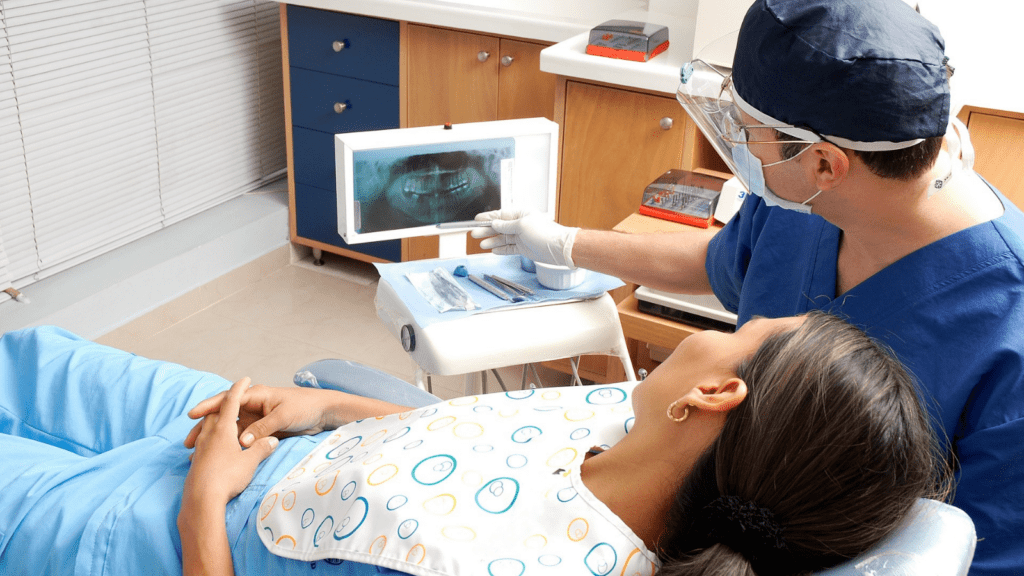
Communication is any business’s main lifeline; terrible quality communication can sink your reputation. If you think this only applies to verbal or written communication, you are wrong because a lousy phone connection can be just as detrimental or more so to the outcome of an interaction. According to a recent study, 77 percent of patients read online reviews before contacting a provider. You can bet a patient will make a snap judgment about the overall quality of your business based on a poor phone connection. Can you waste additional time debating the merits of switching to VoIP for dentistry?
What is VoIP?
VoIP, or Voice Over Internet Protocol, is the technology created to transmit voice using your internet connection. The voice is converted into data packets and sent over the internet. Initially developed in the early 1990s for gamers to communicate, VoIP gained consumer popularity with Skype. VoIP is the basis for many of the communication avenues you already use today, including FaceTime, WhatsApp, and Google Talk, to name a few. In the US, 71 percent of people use VoIP services on their computers, and 49 percent use VoIP on cell phones.
The mainstream adoption is partially due to the audio compression options, which make it possible to use it with virtually any internet connection, including cell service.
How Poor Audio Quality Impacts Patients
Local businesses still rely heavily on voice calls, especially those involved with patient care. Patients tend to feel uneasy with any unknowns, so complicating those unknowns with a frustrating calling experience could exasperate their issues. Implementing a VoIP system will fix poor audio quality.
Dentistry is a necessity, but unfortunately, too many people see it as a luxury. When you do get patients, putting your best foot forward with a crisp phone connection and rich-sounding voice quality shows that you mean business. According to Semrush, 78 percent of people rave about their favorite recent experiences to people they know at least once a week. You care about how you sound, so your patients subliminally understand that you must care about the quality of dentistry services you provide.
Avoid Audio Quality with VoIP
It’s not all sunshine and rainbows, though. To avoid audio quality issues, it’s crucial to go through a quality service provider, like Rhode Island Telephone, which caters specifically to VoIP for dentists in Southern New England, to test the network and ensure the system is calibrated to your exact situation. It’s time to get into the specifics.
VoIP Router
Typically, a router provided by your internet service provider is focused on proper data only, so it might not have the options built in for the best VoIP experience. You will need to look into the router and see if it is optimized for VoIP, supports SIP (Session Initiation Protocol) prioritization, and has advanced configuration depending on your data connection. Most routers offer a massive amount of customization, but end users rarely need to do anything to it once it’s installed.
Avoid WiFi
Using VoIP for dental offices and avoiding WiFi for phone calls will be critical. Due to the number of various equipment being used, for example, X-rays, they could disrupt the connection and distort the quality. It is best to either have a desktop phone wired into the network or a softphone through a computer that is wired into the network. By avoiding WiFi, you will dramatically reduce any interference concerns.
Network Settings
Having the most optimized network will ensure the voice connection remains of the highest quality. Two main options should be at the top of your service providers list during the VoIP implementation process: QoS and VLAN.
- QoS (Quality of Service) is the practice of prioritizing different data on your network. For example, voice calls would be marked as high-priority, and the network would then prioritize that traffic over someone watching a YouTube video.
- VLAN (Virtual Local Area Network): This is the grouping of similar devices on the network to help create a hierarchy.
Along with other networking priorities, like firewall settings, properly setting your network, in the beginning, will make the switch to VoIP even easier.
Bandwidth and Latency
In conjunction with your overall network setup, it’s vital to understand bandwidth and latency. Bandwidth is the amount of data that can be transmitted per second, also referred to as bit rate. Latency is the time it takes to send and receive data, measured in milliseconds.
Then, the best audio codec that fits your latency and bandwidth must be chosen. Regarding VoIP, two voice codecs are used most often: G.711 and G729.
- G.711: This is the fullest-sounding codec with uncompressed audio. The main drawback is that each call uses 64kb/s of bandwidth, so if you have a high simultaneous call volume, you can hear the quality decrease.
- G.729 has powerful compression, so the load on your network is only 8kb/s, which is eight times less than G.711. The drawback here is that since it is compressed depending on how many touchpoints or times it is passed off before hitting the destination, it may also have some quality issues.
The reality is that dentists would benefit from G.711 if their network is strong enough, as the higher-quality sound would be acceptable despite the call volume at any one time.
Get the Highest Quality Audio for Your Dental Practice with Rhode Island Telephone
VoIP for dentists is far less complicated than it seems. Rhode Island Telephone has over 35 years of business communications expertise, which means you can leave the technical maneuvering to us. The above information is meant to inform you of what goes into creating a wonderful experience for you and your patients, not to scare you away from it.
We have learned over our many years that providing education is more impactful than saying, “Just trust us.” We are confident that we can help make your transition to VoIP one of your best business decisions. Download our FREE detailed guide for transitioning to VoIP.
Contact us today to start the process of designing the best VoIP solution for your dentistry practice.




